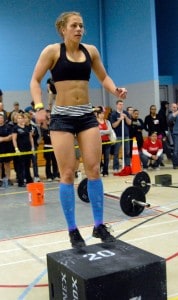Here is a great plyometric exercise that you probably never do. It can be used in HIIT training or any other kind of conditioning workout. You can even use it at the end of a leg workout to really kill those wheels.
How to use this single exercise for a 20-25 minute HIIT workout:
- Lie on your belly, on the floor, jump up to a standing position, then immediately jump up onto a box. Very simple.
- Do 5 sets of 5 reps with 30-45 seconds rest between sets. Execute the reps as fast as possible with good form.
- Take 3 minutes to rest and do some ab work – maybe some fold-ups or something.
- Do another 5 sets of 5 reps.
- Finish up with 3 more minutes of abs.
Stretch for 3-5 minutes.
HIIT workout complete!












